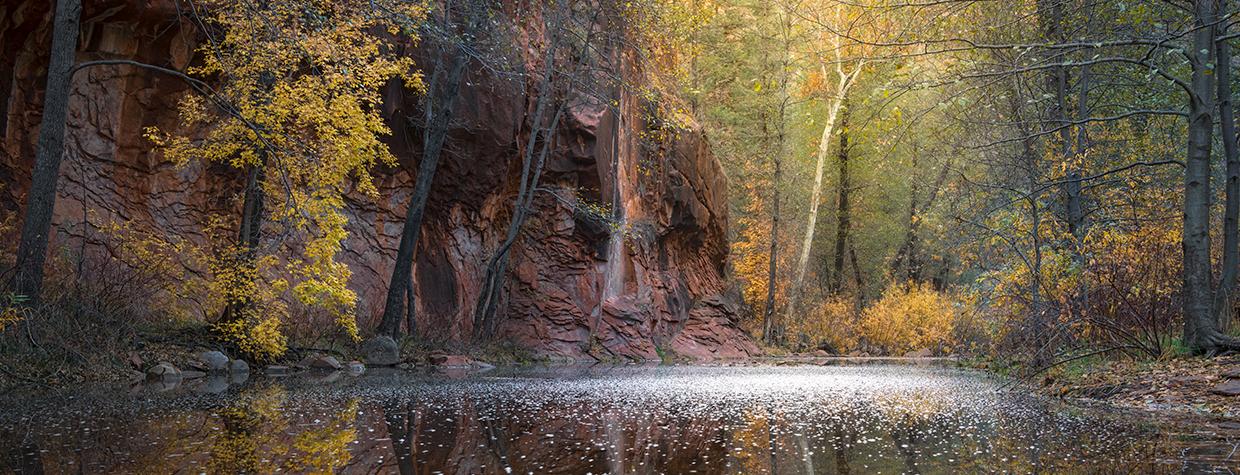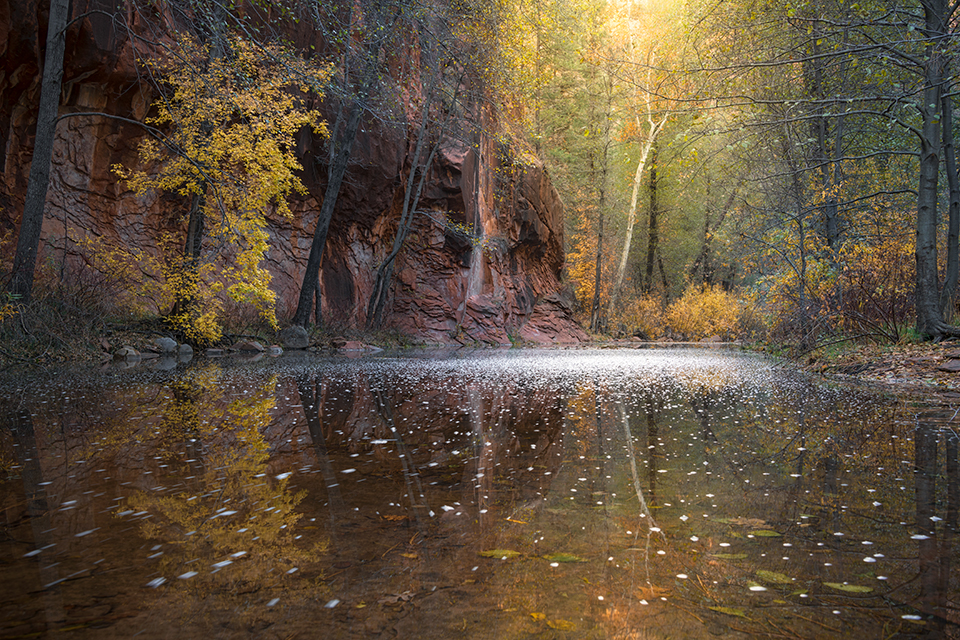
GRAND PRIZE WINNER
Michael Wilson
Soft autumn light lends a dreamlike quality to a streamside scene in Oak Creek Canyon, near Sedona. “Robert Stieve, our editor, commented on Instagram that this photo reminded him of a Claude Monet painting, and it really does feel like an impressionist work,” Photo Editor Jeff Kida says. “Impressionism was about capturing the movement of light and shadow, which this shot does beautifully. In the lower left corner, you can see the blur of the bubbles on the surface, which conveys movement. And the quality of light, coming in from the top of the image and filtering through the trees, really drew me to this photo. It’s a simple image, but there’s a lot going on here, from the reflections in the water to the textures of the trees and rocks. We see a lot of images from Oak Creek Canyon, but this one is particularly unique and well done.”
NIKON D850, 0.4 SEC, F/13, ISO 100, 40 MM LENS
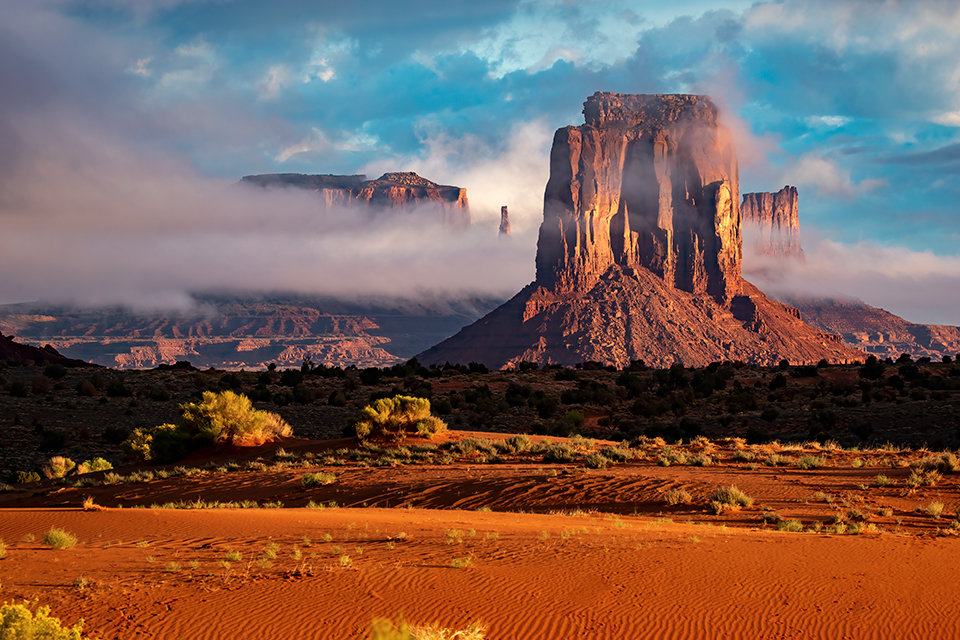
SECOND PLACE
Dave Hatton
Low morning clouds clear from the iconic buttes of Monument Valley after a day of rain. “This vantage point is one we don’t often see from Monument Valley,” Kida says. “The low-hanging clouds provide a softer contrast to the angular forms of the buttes, and the various layers — the sand dunes in the foreground, the butte and the background formations emerging from the fog — come together beautifully. Also, Dave’s use of a telephoto lens pulls everything together and simplifies the shot, reducing it to its essential elements. It’s a very well-composed image.”
NIKON D5600, 1/250 SEC, F/5, ISO 100, 150 MM LENS
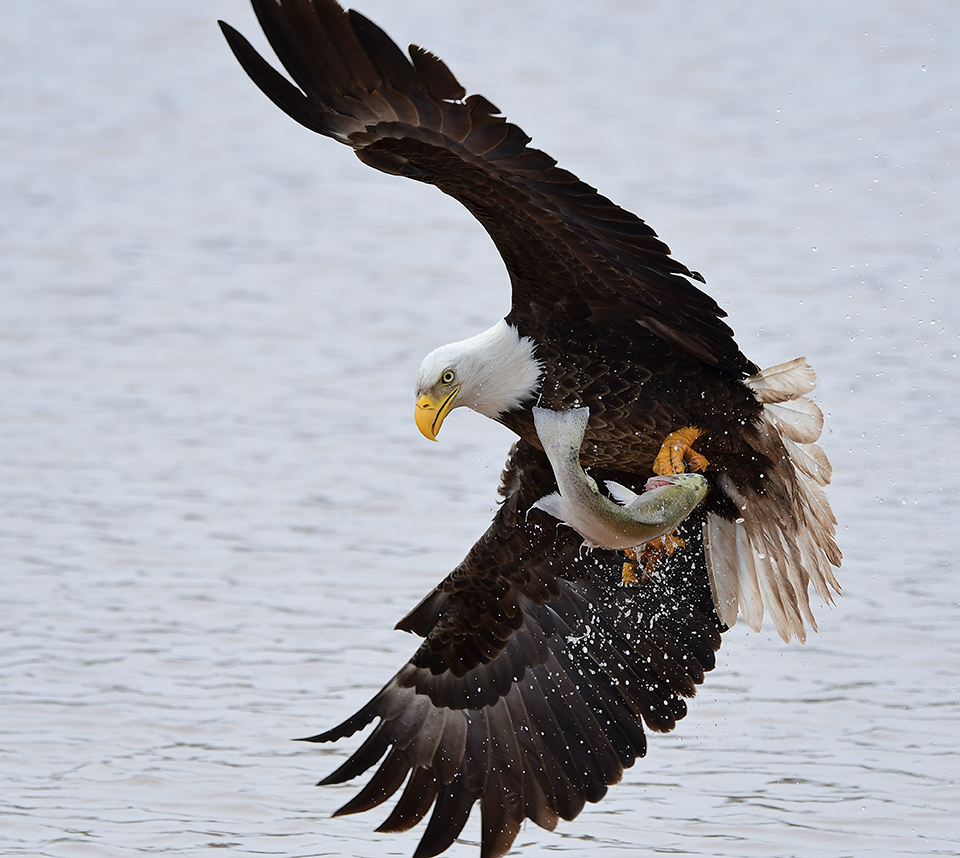
THIRD PLACE
Anne James
A bald eagle snares a trout in Payson, a Mogollon Rim community. “Great catch — literally,” Kida says. “Photographing wildlife on the fly is such a challenge, and it’s a little like shooting sporting events and trying to catch the peak moment. This is that moment, and the focus and exposure are perfect. It’s also an angle that we don’t often see in photos of bald eagles, and that, plus the bend in the trout, makes the image more dynamic.”
NIKON D500, 1/2500 SEC, F/7.1, ISO 1000, 260 MM LENS
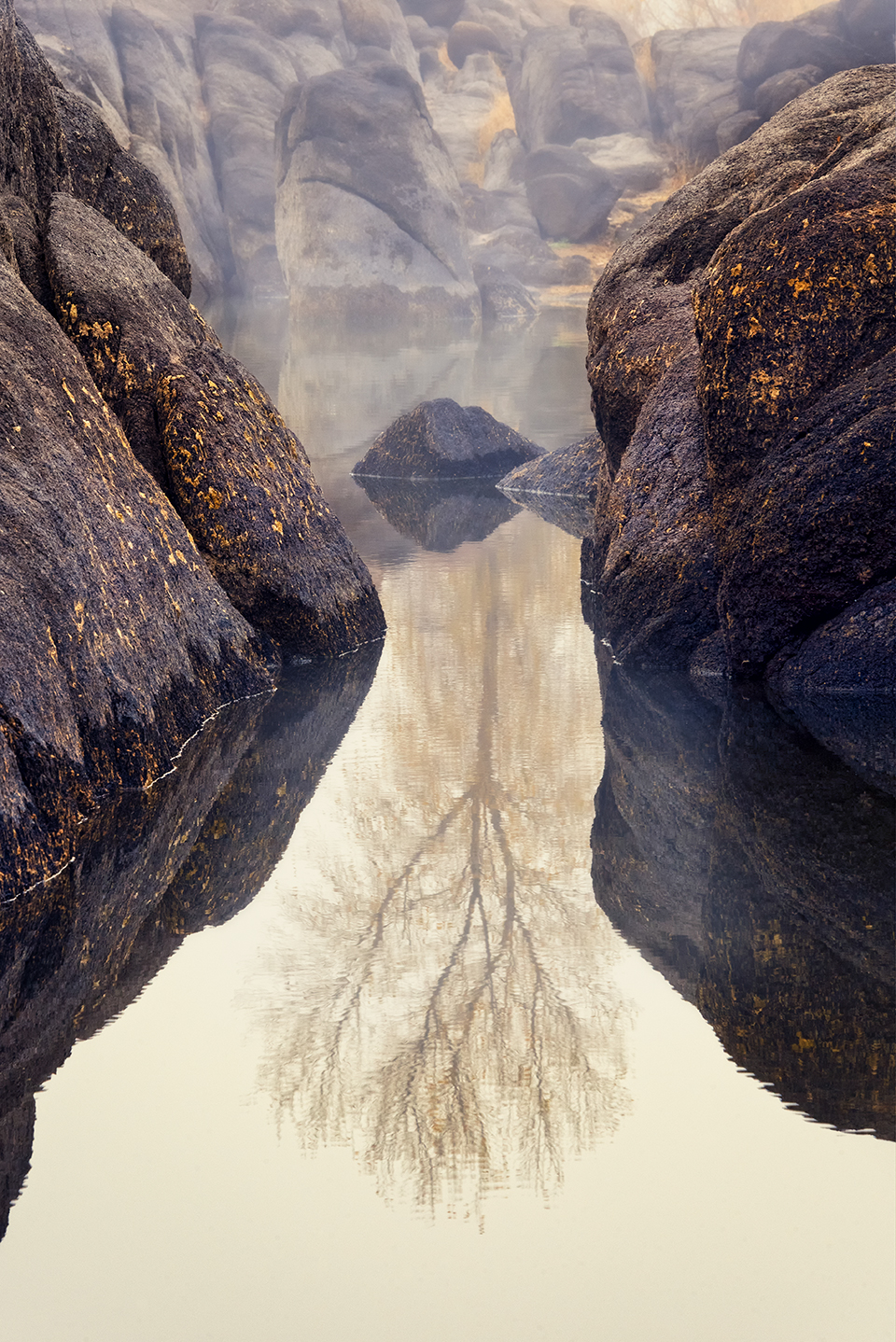
HONORABLE MENTION
Gerry Groeber
The calm water of Watson Lake, near Prescott, mirrors a nearby tree and the surrounding Granite Dells on an overcast day. Kida notes the contrast between the hard forms of the rocks and the softer sky and water, but also the image’s simplicity. “This is a photo about shape and form,” he says. “I love that Gerry put himself where he could see the reflection of the tree in the water. And the texture of the leaves on the sides of the rocks really adds to this image. It’s a very pleasant photo to look at.”
NIKON D750, 1/160 SEC, F/16, ISO 800, 160 MM LENS
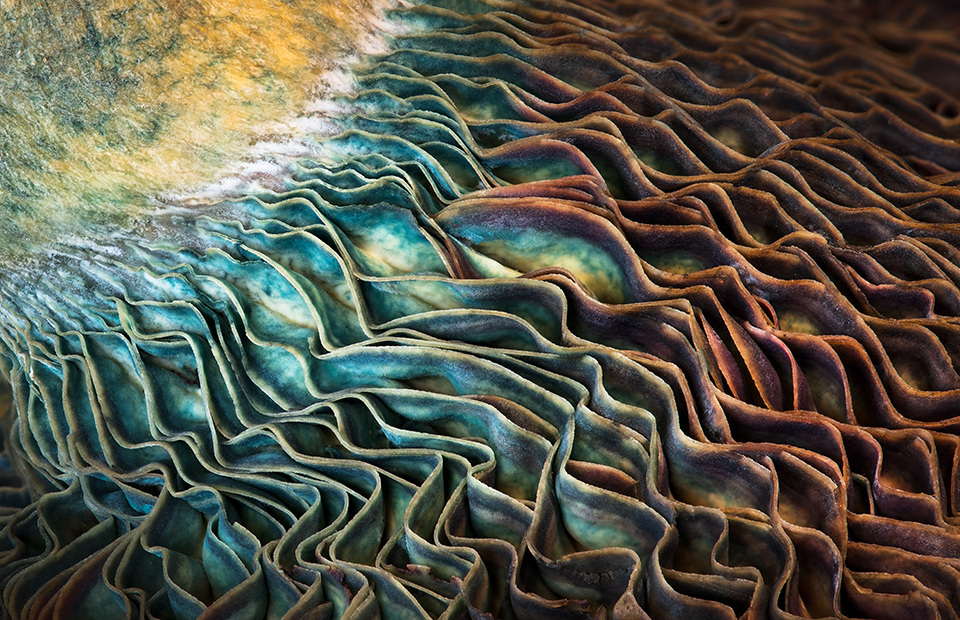
HONORABLE MENTION
J. Fritz Rumpf
Varied colors and textures define the underside of a mushroom in the White Mountains. “Part of what makes this photo is Fritz’s willingness to explore the visual possibilities of the underside of a mushroom,” Kida says. “What he found is something that looks like a satellite photo of some strange geological formation. A lot of times, there’s visual wonder all around us, but we have to slow down and look at it, and that’s what he’s done here. The composition of this image, with ‘spokes’ emanating from the ‘hub’ in the upper left corner, and the varying tones and colors come together brilliantly. It’s simple, but it’s fantastic.”
NIKON D850, 1/13 SEC, F/11, ISO 100, 105 MM LENS
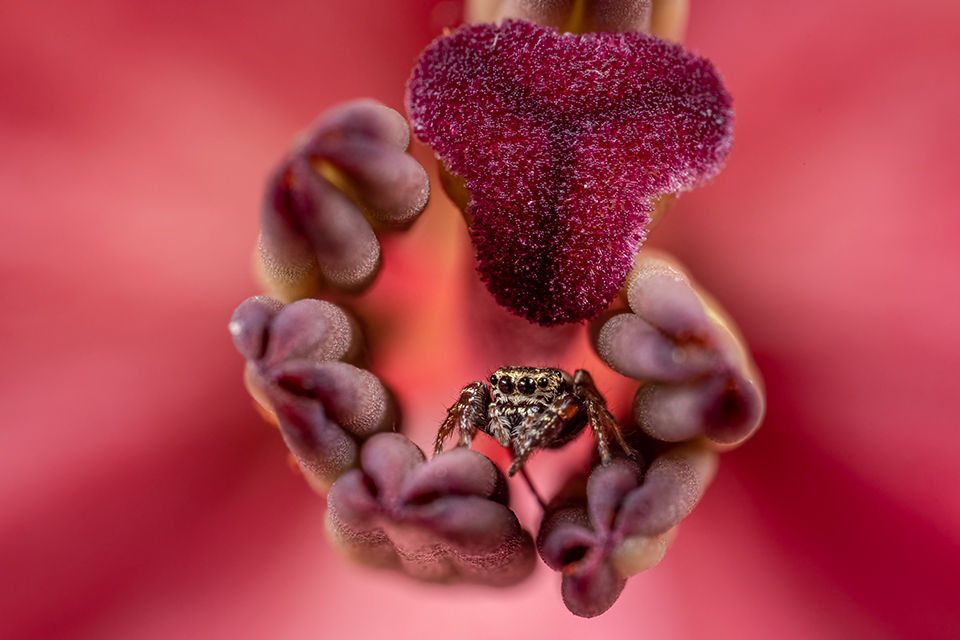
HONORABLE MENTION
Jonathan Cline
A tiny jumping spider keeps an eye out inside a flower in Phoenix. “The entire photo is enveloped in these soft, warm tones, and your eye immediately goes to the spider, because it’s super sharp,” Kida says. “You’re instantly drawn into this image, and it makes you wonder what the heck is going on here. You get the sense that this is the spider’s lair. It all works together beautifully.”
CANON EOS R5, 1/200 SEC, F/16, ISO 200, 100 MM LENS
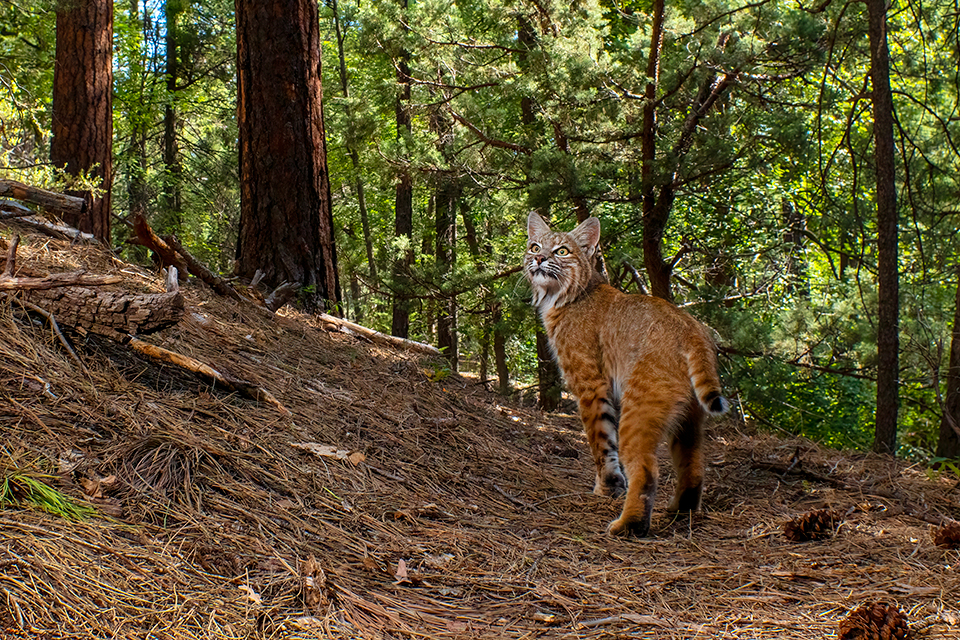
HONORABLE MENTION
Mike Haynie
A bobcat eyes its surroundings amid ponderosa pines north of Payson. This image was made using a camera trap, with the camera shutter being triggered by a motion sensor. “This is truly a case of art meeting science,” Kida says. “Mike researched the behavior of this animal and was willing to put a camera out in the wilderness and rig it to capture an image. In this case, he captured a wonderful moment. This image makes you wonder what the bobcat is looking at.”
CANON EOS M6, 1/200 SEC, F/9, ISO 400, 25 MM LENS
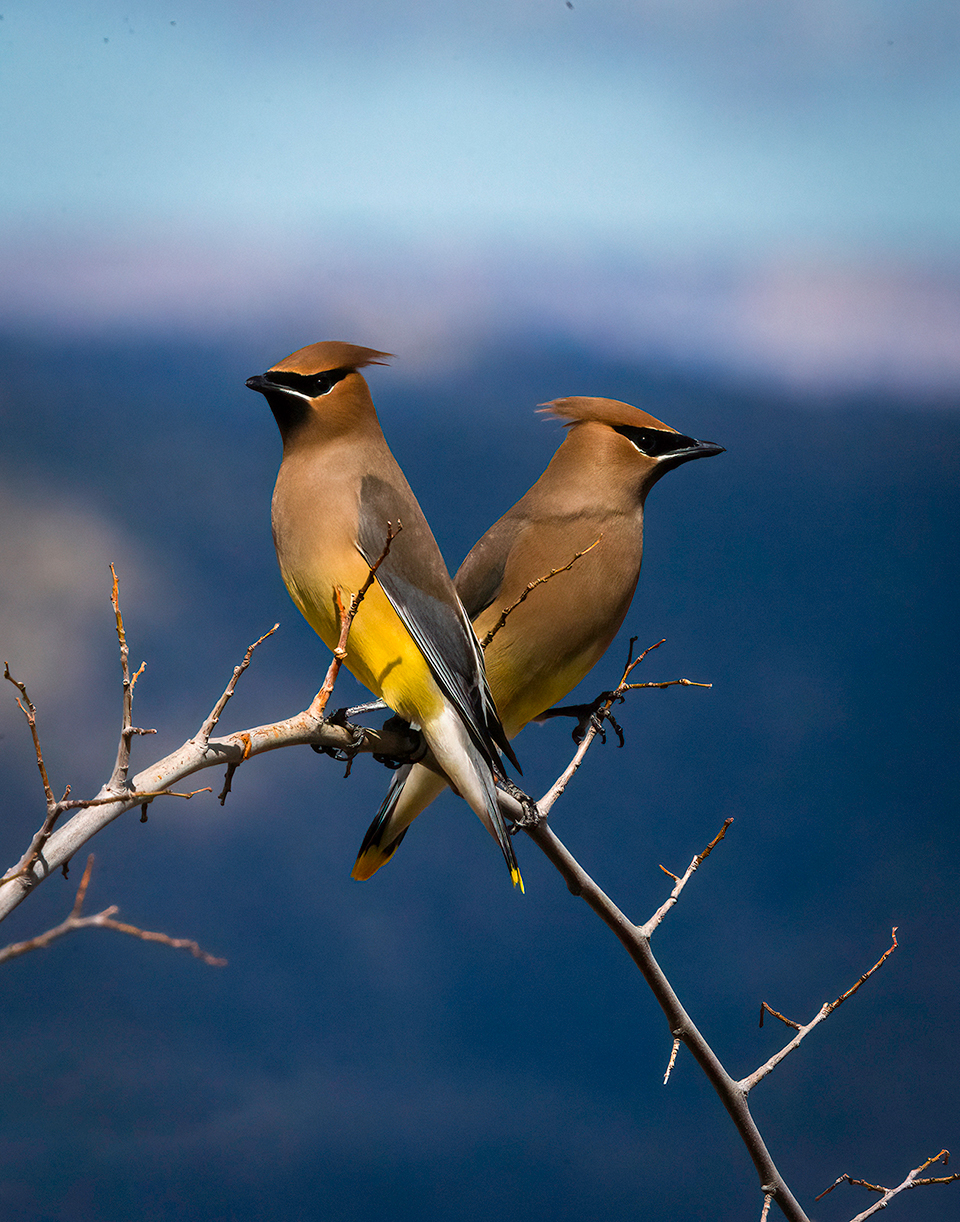
HONORABLE MENTION
Robert T. Kelly
“The curve of the branch moves your eye up into the frame,” Photo Editor Jeff Kida says. “I love that the birds are looking in opposite directions. And the use of a telephoto lens completely blurs the background, allowing the birds and their dramatic coloration to stand out. It’s a simple photo, but a wonderful one.”
NIKON D610, 1/2500 SEC, F/29, ISO 3200, 600 MM LENS
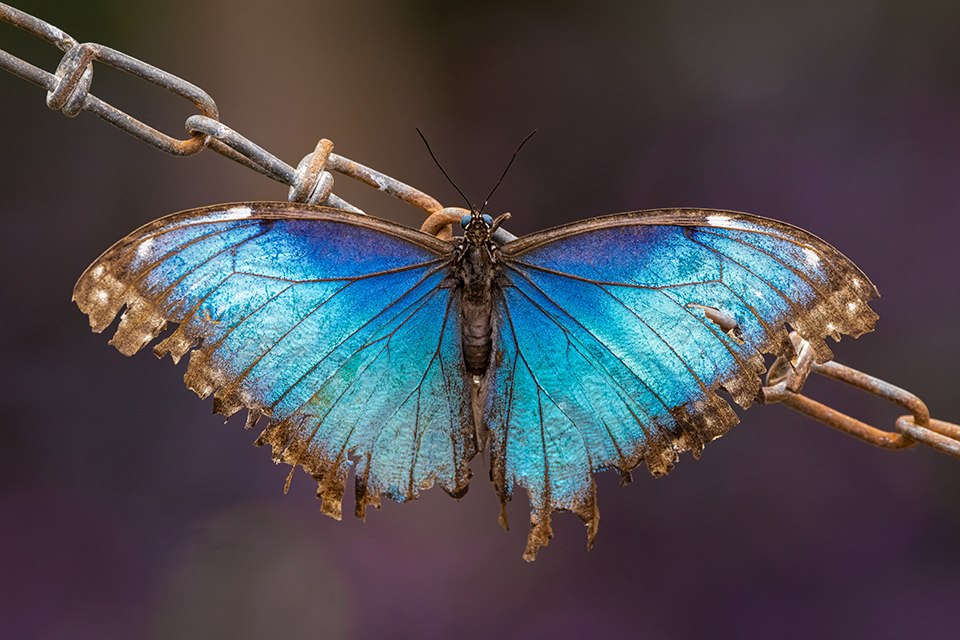
HONORABLE MENTION
Jonathan Cline
A blue morpho butterfly with weathered wings clings to a rusty chain in Scottsdale. “The battered wings of this butterfly, sitting on this rusted old chain, just worked for me,” Kida says. “Both are clearly nearing the end of their lives. The fact that the chain is on a diagonal is much more interesting than if it were vertical or horizontal, and the chain itself adds an urban or man-made element that we don’t often see in Arizona Highways. And everything is very sharp.”
CANON EOS R5, 1/125 SEC, F/11, ISO 2500, 599 MM LENS
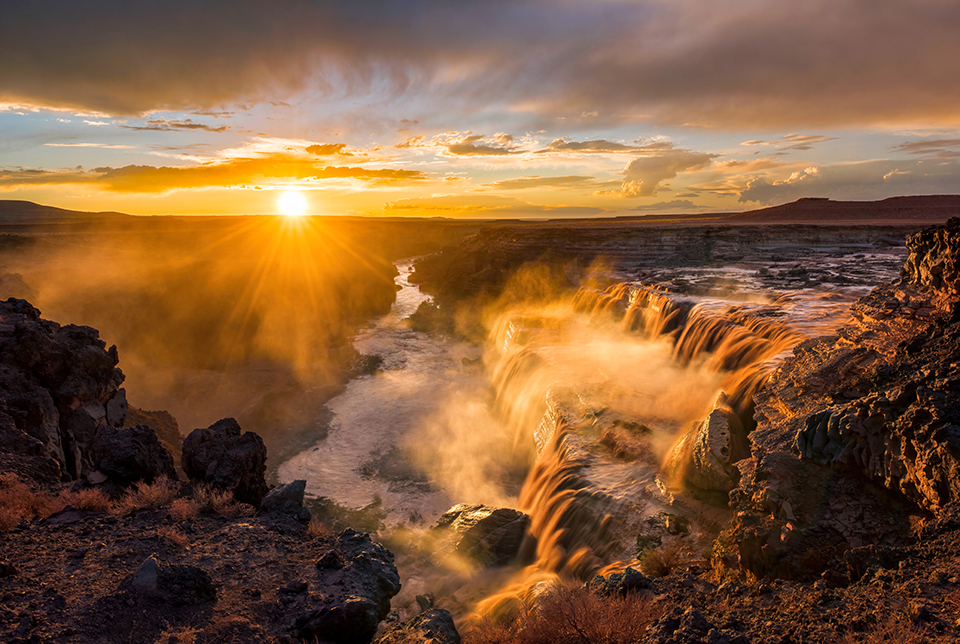
HONORABLE MENTION
Theresa Rose Ditson
The setting sun brings golden hues to the rushing water of Grand Falls, a waterfall on the Navajo Nation’s section of the Little Colorado River. “Theresa made this photo at the optimal time of day and time of year,” Kida says. “The river is flowing, and the sun is hitting the face of the falls and illuminating the mist. The rocks in the foreground frame the scene in a powerful ‘V’ shape, and the continuation of the river through the center of the frame tells a bit of a story. This is a well-planned and well-composed shot.”
NIKON D810, 0.3 SEC, F/22, ISO 31, 22 MM LENS
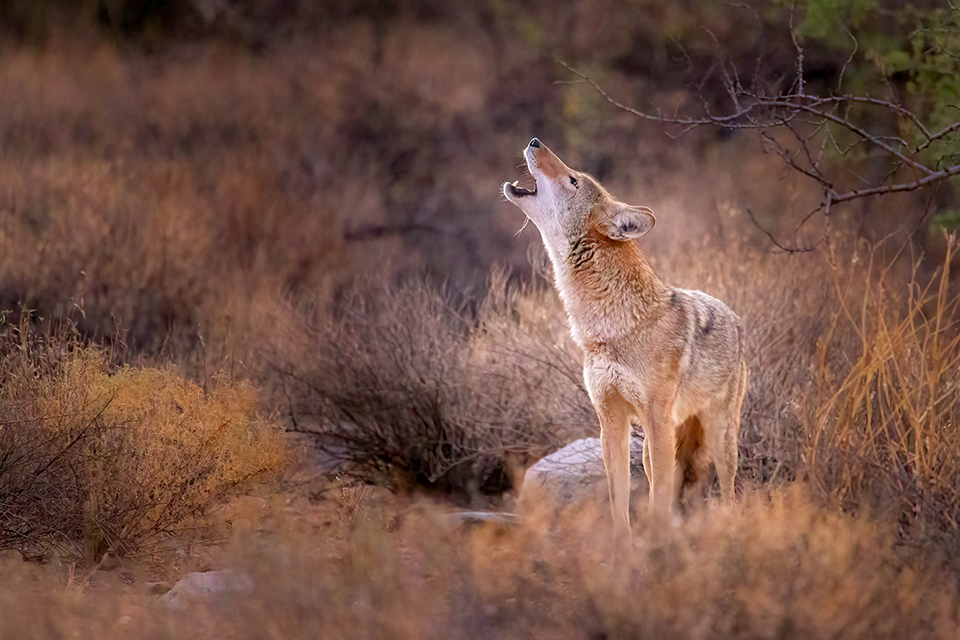
HONORABLE MENTION
James Capo
“I love the use of a telephoto lens for a shot like this,” Photo Editor Jeff Kida says. “The coyote is tack sharp — you can literally see the whiskers on its chin — while the foreground and background are completely blurred, which separates the coyote from its surroundings. The light is directional but soft, and the fact that the coyote is howling makes it a wonderful little moment.”
CANON EOS 6D MARK II, 1/250 SEC, F/6.3, ISO 25600, 600 MM LENS
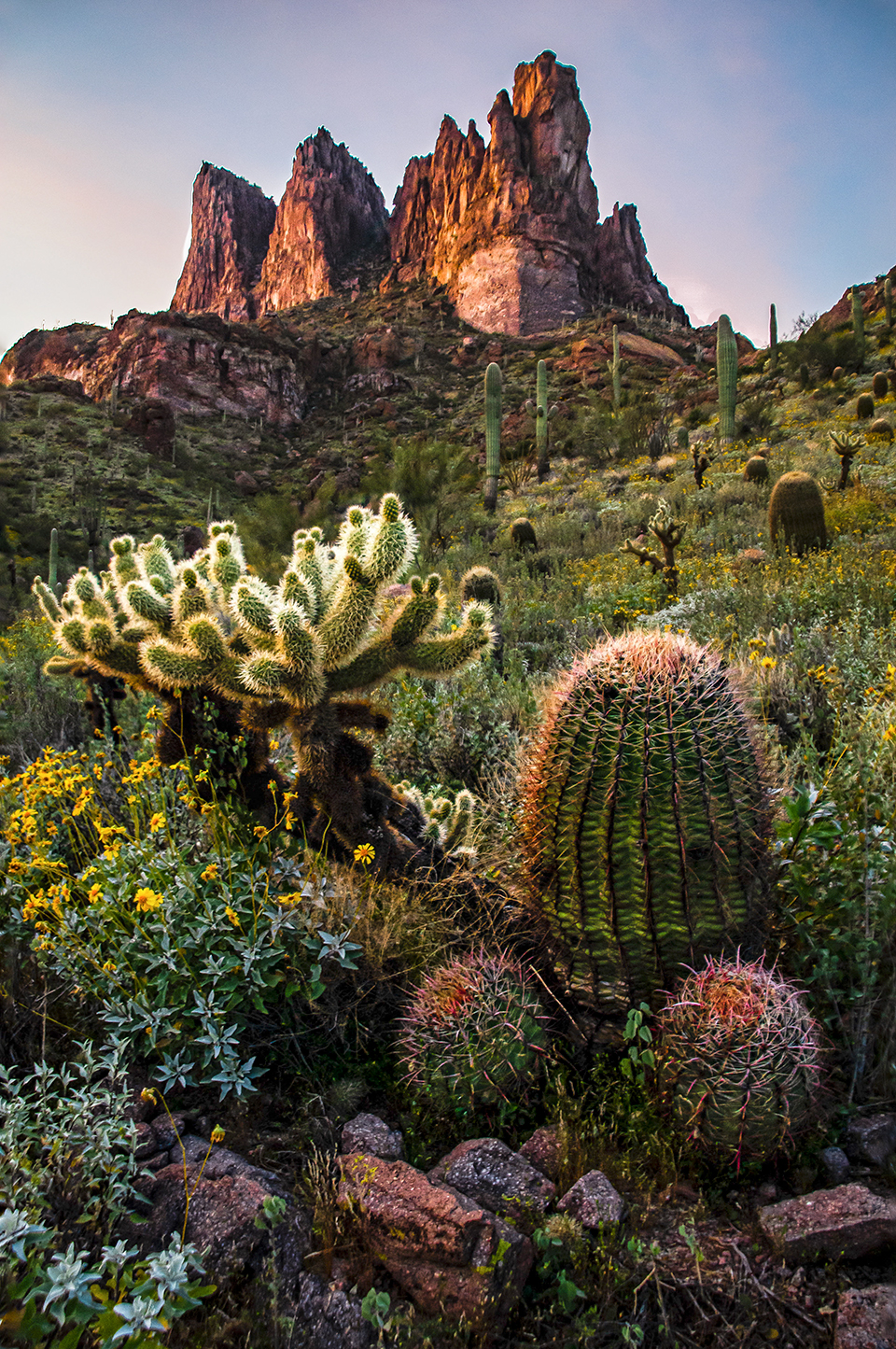
Adventures In Nature Student Photo Contest Winner
Kaden VanDuyne
Cactuses and wildflowers thrive beneath the peaks of the Superstition Mountains, east of Phoenix. This image took the top prize in this year’s student contest, sponsored by Arizona Highways, The Nature Conservancy and Cox Communications. “This is a classic photo, which is a good thing, especially for a young person,” Kida says. “There are interesting elements everywhere, from the flowers and cactuses in the foreground to the saguaros behind them to the rock pinnacles in the background. The soft directional light allows us to see all the details of the desert flora but doesn’t compete with the content of the image. This is really nicely done.”
NIKON D7000, 1/40 SEC, F/3.5, ISO 1000, 18 MM LENS

